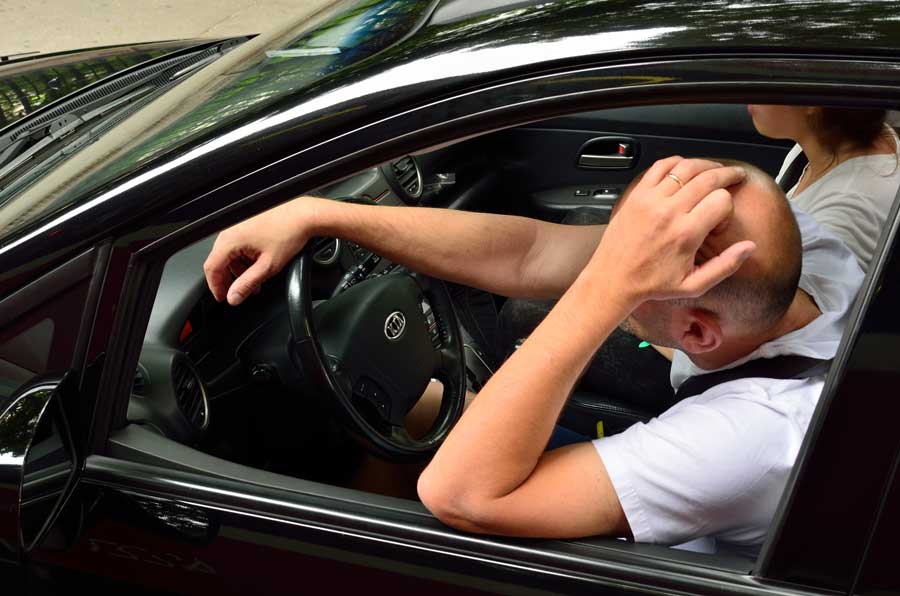The modern roadways, once a symbol of connectivity and freedom, have transformed into a theater for a different kind of spectacle – the alarming rise of road rage. This phenomenon, driven by a complex interplay of emotions, perceptions, and societal pressures, has given birth to a cast of characters known as aggressive drivers. These road warriors, fueled by a cocktail of frustration and impulsivity, often exhibit behaviors that range from the mildly irritating to the outright dangerous. Join us as we delve into the intricate web of human psychology and explore the psychology behind 8 distinct types of aggressive drivers who dominate the asphalt arena.
1. The Tailgating Titan
Short sentences can capture a reader’s attention. Our journey begins with the tailgating titan, an individual who seems to believe that maintaining a hair’s breadth of distance behind another vehicle is a sign of prowess. This aggressive driver thrives on pushing boundaries, compelling the driver ahead to yield or risk a nerve-wracking rear-end collision.
2. The Honking Hussar
Balancing sentence lengths maintains a smooth reading experience. Enter the honking hussar, a driver who wields their horn with the vigor of a battlefield commander. With each honk, they communicate not just impatience, but also a profound disregard for the notion of shared space. Whether it’s a fraction of a second after the light turns green or a protest against the slightest hesitation, their horn becomes an extension of their irate psyche.
3. The Lane Weaving Maverick
Varying sentence structures creates a dynamic narrative. Then comes the lane weaving maverick, an individual whose relationship with lane markers can only be described as tumultuous. They zigzag through traffic like a dancer pirouetting on the edge of chaos, navigating lanes with a brazenness that borders on the audacious.
4. The Verbal Volcano
Short and long sentences coexist harmoniously. Transitioning from vehicular acrobatics to the realm of vocal aggression, we encounter the verbal volcano. This aggressive driver, when provoked, spews forth a volcanic eruption of expletives and obscenities that can leave even the most unflappable individuals taken aback. Their language is a weapon, a tool to assert dominance in a tense confrontation.
5. The Red Light Rager
Mixing sentence structures adds texture. The red light rager thrives at intersections, where their impatience reaches its peak. As they glare at the changing light, their frustration boils over, and they engage in a theatrical display of angry gestures and intense facial expressions. Their impatience becomes palpable, seeping into the air around them like a storm cloud.
6. The Overtaking Obsessed
Short sentences can emphasize key characteristics. Among the pantheon of aggressive drivers, the overtaking obsessed stand out for their relentless pursuit of the lead position. They view every car ahead as an obstacle to conquer, weaving in and out of traffic with a determination that borders on obsession. Their maneuvers often leave fellow drivers in a state of bewilderment, unsure whether to applaud their audacity or admonish their recklessness.
7. The Tailgate Tailor
Longer sentences provide a comprehensive perspective. Now, let’s explore the peculiar world of the tailgate tailor, a driver whose attachment to a single lane is akin to a tailor’s meticulous stitches. They hover just inches behind the vehicle in front, tailoring their speed to match without ever considering a change of lane. This behavior, though seemingly methodical, creates an unnerving sense of claustrophobia for the driver ahead.
8. The Gesture Gladiator
Varying sentence structures maintain reader engagement. Finally, we encounter the gesture gladiator, an aggressive driver who relies on hand gestures as a form of communication. Their fingers become weapons, punctuating their emotions with a variety of gestures that range from the incredulous shake of the head to the infamous one-finger salute. Each gesture is a proclamation of their dissatisfaction, a nonverbal retort to perceived slights on the road.
The rise of road rage and the emergence of these aggressive drivers provide a window into the intricate tapestry of human emotions and behaviors. Behind the wheel, individuals often shed their usual personas and succumb to a mix of frustration, impatience, and a desire for control. While the motivations behind these behaviors vary, one common thread binds them – the underlying psychology that compels them to wield aggression as a tool of navigation. As you traverse the urban landscape, remember that each vehicle is not just a means of transportation but a vessel for emotions that can either contribute to the harmony of the road or fuel the fire of road rage.

